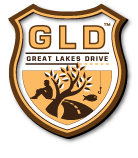Lake Superior National Marine Conservation Area of Canada
Lake Superior National Marine Conservation Area of Canada
Lake Superior National Marine Conservation Area of Canada
Lake Superior National Marine Conservation Area is a relatively new creation as it was founded in 2007 and is the worlds largest freshwater protected area at 10, 850 square kilometres (3860 sq. miles) or 1/8 of the entire lake, the largest freshwater lake in the world. It stretches for 140 kilometres (85 miles) along the rugged northern shore of Gitchi Gumme (the lakes aboriginal name), from Thunder Bay east to Bottle Point just east of Terrace Bay. It stretches south to Isle Royale National Park in the Unites States. In addition to the protected lakebed with its collection of shipwrecks it includes the waters of Black Bay and Nipigon Bay, river estuaries as well as 60 square kilometres (23 sq. miles) of mainland, islands and shoals. This includes the 2009 acquisition of the eight almost untouched Wilson Islands a natural treasure trove for rare flora and fauna.
One of only 2 operating National Marine Conservation Areas in the province (the other being Fathom Five Marine Conservation Area off the tip of the Bruce Peninsula), the protected area is the spawning and schooling waters of as many as 70 species of coldwater fish including:
- lake trout
- lake herring
- walleye
- salmon
- pickerel
- perch
- whitefish
Animals that call the area home
- woodland caribou
- moose
- deer
- black bear
- wolves
- beaver
- peregrine falcons
- bald eagles
- herons
- pelicans
- loons
- osprey
- cormorants
The vegetation of the various islands is also unique being subarctic and alpine. The mainland also contains historically significant aboriginal sites including two areas of pictographs and former settlements.
Important Notes
As of now the Conservation Area does not have any facilities but it is accessible by land along the Trans-Canada Highway (Highway #17) or by boat. The Lake Superior National Marine Conservation Area is stunningly beautiful. While lacking in facilities it more than makes up for it in incredibly picturesque landscapes and a natural beauty unlike any other place in the world.
Please note that if traveling through the area by boat that Lake Superior is famous for its fierce storms that can brew up suddenly. This is why there are so many shipwrecks lying at its bottom. Care should always be taken and the weather report should be checked diligently prior to going far offshore. The water is extremely cold and hypothermia is an ever-present danger. As of now, the park is mainly of interest to nature lovers, photographers, boaters, fisherman and outdoor adventure seekers.
What is a national marine conservation area?
National marine conservation areas are established to conserve and protect representative examples of Canada’s oceans and Great Lakes. Each marine conservation area contributes to our understanding and appreciation of Canada’s natural and cultural marine heritage. They also:
- Contribute to the social, cultural and economic well-being of people living in coastal communities.
- Provide opportunities for the ecologically sustainable use of aquatic resources for the long-term benefit of coastal communities.
- Involve other federal and provincial agencies, aboriginal governments, communities and others in establishing and maintaining the areas.
Hunting and fishing can continue in marine conservation areas. For Lake Superior, the Ministry of Natural Resources will continue to manage those activities. Also, Transport Canada will continue to manage marine transportation.
Lake Superior National Marine Conservation Area Photo Source Post
Content the property of ontario-canada-travel.com. Photography the property of GaryAndJoanieMcGuffin.com/WWF-Canada
IMPORTANT NOTE: Great Lakes Drive, affiliates, and site resources are not responsible for any incidents attributed to the use of this information. All information provided on this site should be considered a simple bit of information that informs the average individual on activities or available lodging that others have participated in, and in many cases warns them of dangerous aspects of a location, and should not be considered a promotion for taking part in the activity or a recommendation to use, stay, or support. Some of these pages represent extremely dangerous activities and should not be considered by individuals and families as normal activities. Many of the links provide information contributed by professionals or adrenaline junkies and are meant only as interesting points. Other information would probably never be heard about and represents wonderful historic facts and fiction about places that have disappeared. All activities from driving a car to entering the water can be hazardous and should be taken on at your own risk. Take responsibility for your actions and be very careful when exploring this wonderful fast land that is available to us all. Ads on the site may be from awesome companies but for legal reasons they do not necessarily represent the beliefs or receive the support of GreatLakesDrive.com. By reading the information on a page, and/or clicking on any of the links, you agree to take full responsibility in the result. Drive Safely! Stay on the path if you are concerned about the results of stepping off the edge. Discover a wonderful place right in your own backyard! You will never forget it.


